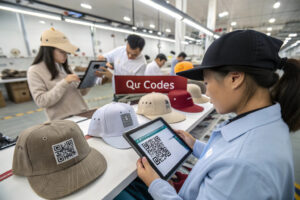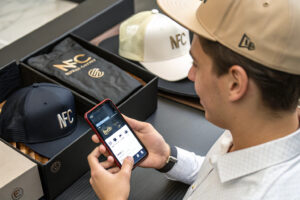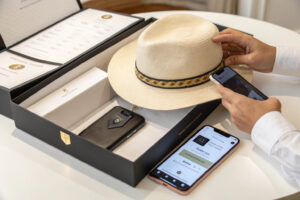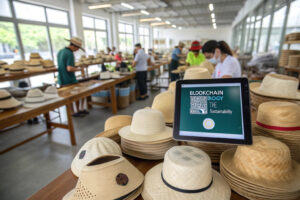Ron, a U.S. buyer importing tens of thousands of hats annually, knows margins are everything. But negotiating prices with a cap factory in China is about more than just asking for a discount—it’s about understanding production realities, buyer leverage, and cultural nuance.
To negotiate the best bulk pricing for wholesale caps, you need to prepare with market knowledge, order strategy, and a supplier relationship mindset. Done right, you can secure savings without sacrificing quality.
Let’s walk through how professional cap buyers get the best deals—and how you can too.
What factors influence wholesale cap pricing?
Not all caps are created equal—and neither are their costs. If you're asking a supplier for lower pricing without understanding what drives costs, you’re starting blind.
Pricing for wholesale caps depends on material choice, design complexity, MOQ, delivery terms, and seasonal demand. The more data you have, the stronger your negotiating position becomes.

What’s included in a standard cap quote?
Most quotes from professional factories include:
- Material & labor cost
- Embroidery or print cost per panel
- Packaging (polybag or custom box)
- Transport to port (FOB or EXW terms)
Understanding what’s not included—like customs clearance, brand hangtags, or DDP shipping—is equally important. You can learn more about quote breakdowns from Alibaba RFQ cost structures.
How do MOQs affect unit price?
Higher Minimum Order Quantities (MOQs) significantly lower per-unit cost because they spread out setup expenses like dyeing, printing, or embroidery. Our factory offers:
| MOQ Tier | Baseball Cap Unit Price |
|---|---|
| 300 pcs | $2.65 |
| 1000 pcs | $1.98 |
| 5000+ pcs | $1.55 |
The key is to ask the factory where their pricing breaks occur and align your quantities to hit those targets.
How to prepare before price negotiations?
Going into a negotiation without benchmarks is like sailing blind. Successful buyers like Ron come armed with data—and confidence.
Before negotiating cap pricing, prepare your BOM (bill of materials), target unit price, and comparative factory quotes. This shows you mean business.

Where can you get pricing benchmarks?
Use platforms like 1688.com (domestic China prices), Alibaba, and past supplier quotes. At Global-Caps, we often share historical price points with loyal customers to support honest negotiations.
Also, be aware of currency shifts (RMB/USD), which can move your landed cost. Tools like X-Rates help monitor trends.
What questions show you're a serious buyer?
- Can you quote based on FOB Ningbo & DDP USA East Coast?
- What price break occurs at 1,000 vs. 5,000 pcs?
- Do you include embroidery digitizing fees in the unit price?
- Can I use my nominated fabric mill or hangtag printer?
By showing technical understanding, you earn supplier respect—which results in better offers.
How can you negotiate pricing without harming quality?
Pushing price too low can backfire—leading to poor stitching, subpar embroidery, or rejected batches. Smart buyers know how to push strategically, not blindly.
Negotiate based on scale, efficiency, and packaging—not by forcing the factory to cut corners. Suppliers will protect loyal, margin-respecting clients over time.

What are win-win tradeoffs to ask for?
- Batch orders: Lock in 3 orders over 6 months to get better upfront pricing
- Flexible delivery: Allow ±10% tolerance for faster production
- Standard trims: Choose factory’s stock buckles or closures over custom ones
We often tell clients: if your price target is fair and your communication is proactive, we’ll fight to meet it—even if it means tweaking internal cost points.
How do payment terms factor into price?
Offering 30% deposit / 70% before shipment is standard, but high-volume buyers can sometimes negotiate LC at sight or net 30 days. These terms improve cash flow on both sides and may unlock 1–2% price leeway.
More details about payment structures are explained on Trade Assurance terms.
What cultural tips help in China price negotiations?
In China, negotiations are a relationship-building process, not a one-time transaction. Respect, clarity, and patience go further than aggressive demands.
Build rapport with your supplier, show consistency, and avoid sudden ghosting or renegotiation after agreement. This opens doors to better pricing, faster samples, and VIP status.

What behavior builds trust?
- Use WeChat or video calls to communicate tone
- Send structured quote requests with full tech packs
- Follow through with payments and feedback on time
- Share your market feedback (e.g., “We sold out in 3 weeks”)
Trust leads to perks. We often give our long-term partners first access to new hat styles and raw fabric discounts.
Can group buying improve pricing?
Yes. If you join forces with other importers or run multiple brands, we can pool production to reach higher MOQ brackets. This is especially helpful for customized snapbacks or season-specific collections.
Ask us about our Partner Program, which consolidates small brand orders monthly to offer better FOB/EXW pricing and priority slots during peak season.
Conclusion
Negotiating bulk pricing for wholesale caps isn't about being the cheapest—it’s about being the most informed and cooperative buyer at the table. When you align your volume, timing, and communication, suppliers like Global-Caps respond with the best we have to offer. After all, strong margins are built on strong relationships.







